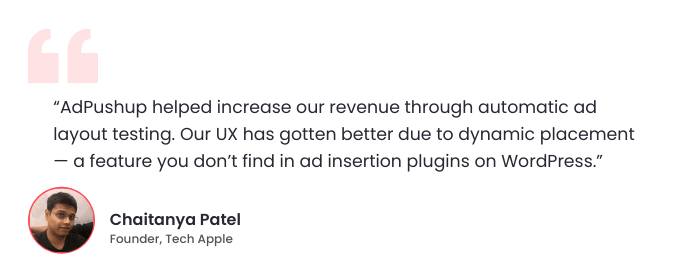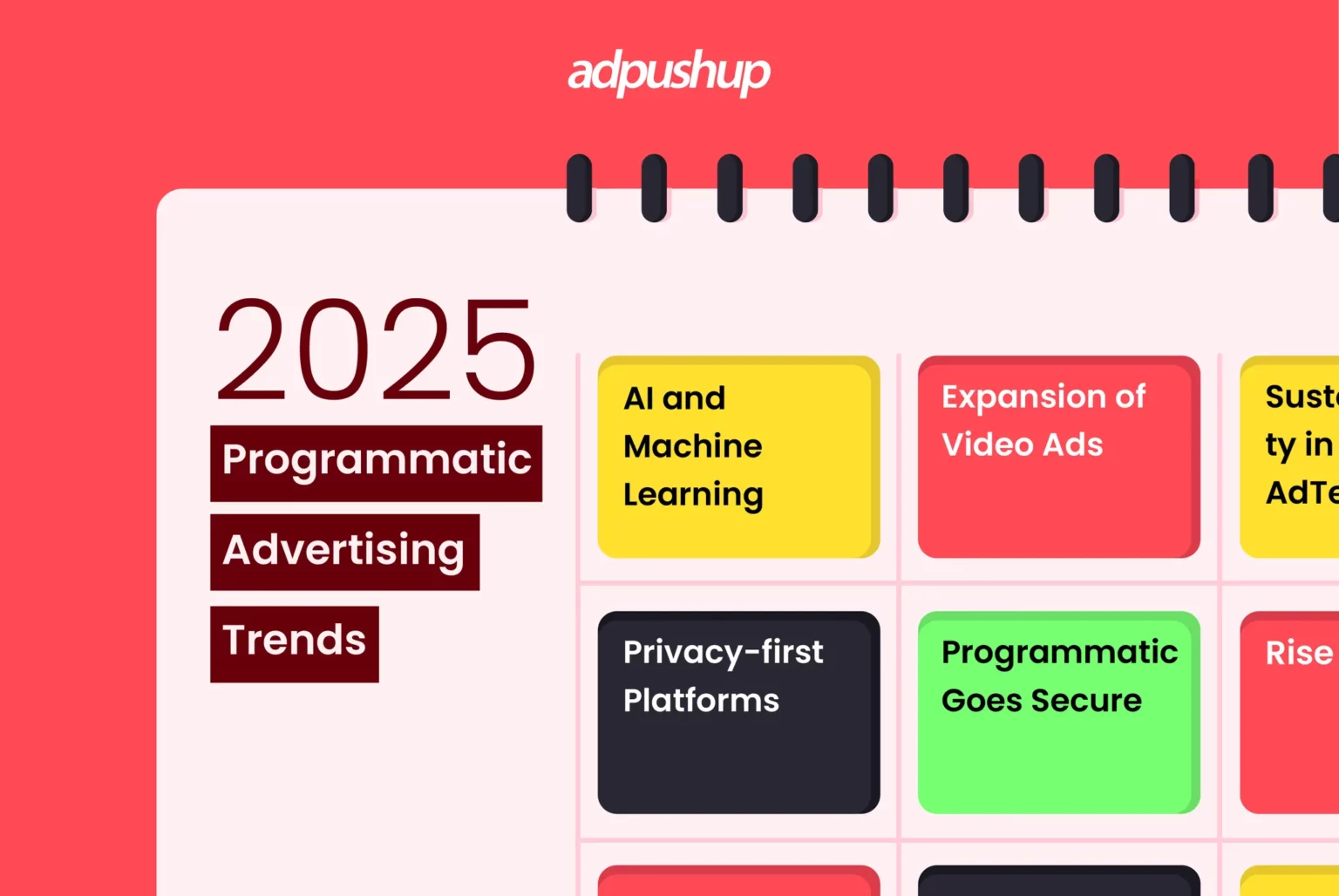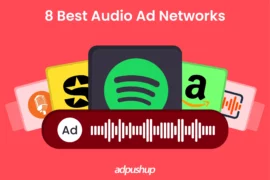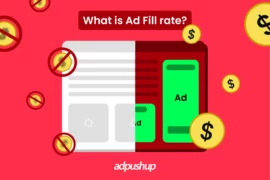Stay ahead of the game with the latest programmatic advertising trends for publishers in 2025. Discover the impact of third-party cookies apocalypse, mobile dominance, data monitoring tools, and more.
Programmatic advertising has been a breakthrough in the world of marketing. Ever since it was introduced, it has been taking the advertising industry ahead by leaps and bounds.
As we enter 2025, several things have changed, and there are multiple programmatic advertising trends that publishers should keep a close eye on to have that competitive edge. From AI and ML for programmatic efficiencies to various manual tactics and methodologies, there is a lot to keep up with this year.
This blog post explores programmatic advertising trends in detail. It offers insights and strategies for publishers to stay ahead and succeed in the digital advertising landscape.
What is Programmatic Advertising?
Programmatic advertising is a real-time automated selling/buying of ad space between publishers and advertisers. It employs machine learning to perform a multitude of tasks, including selecting ad formats, setting floor prices, enabling targeting, producing necessary reports, and many more.
Programmatic Advertising Statistics
Let’s take a look at the numbers and stats for Programmatic Advertising:
1. According to eMarketer, programmatic advertising spending in the United States is expected to touch $180 billion by 2025.
2. Programmatic advertising spending worldwide is expected to reach $779 billion by 2028.
3. IAB vows for a more sustainable approach and to improve carbon emissions tracking for media buying and planning in 2025.
4. Podcast advertising is set to touch $2.6 billion by 2026. The programmatic evolution and new revenues from video and live events will help drive the growth.
5. In digital advertising spending worldwide, programmatic advertising’s share will steadily grow compared to non-programmatic means in the coming years.
Now without further ado, let’s delve into trends in programmatic advertising.
Programmatic Advertising Trends to Watch in 2025

Trend #1: First-party Data Utilization
Cookies are being pushed away because of privacy concerns; thus, finding alternatives for the third party is a pressing concern for the publishers. Still, you will be surprised to know that, as per Adobe’s research, 74% of marketers still relied on third-party cookies.
As publishers search for viable alternatives to third-party cookies, one solution that has emerged is Google’s PPID (Publishers Provided Identifiers).
So, marketers should embrace cookieless alternatives to save themselves from potential disruptions to their advertising campaigns.
Trend #2: Rise of DOOH (Digital-out-of-Home)
It’s been quite some time since the pandemic. And people have gotten back to their offline preferences. This creates a huge opportunity for advertisers to deliver ads at scale. Moreover, this programmatic advertising trend is free from cookie restrictions and has been thriving lately. Therefore, marketers should also focus on billboard ads.
Not only that, but things have changed a lot. The experiences of people in offline advertising have significantly improved. It includes 3D board ads, interactive display ads, and more. People get to see these ads whether travelling by bus, commuting to work, or hopping in a general store to buy groceries.
According to Statista, DOOH’s portion of worldwide OOH ad revenues will eventually top 40% in 2024. Moreover, Digital out-of-home (DOOH) advertising spending worldwide is set to reach $30 billion by 2029. As more digital screens for ads continue to emerge across the country, programmatic strategy is well-positioned to secure a larger portion of this spending in the coming years.
DOOH Ad Spending in the US 2019-2026
Programmatic DOOH advertising offers several benefits, such as broad reach, immunity to ad blockers, and unobtrusive placements. As a newcomer to the advertising scene, it is expected to benefit from the cookieless future due to its unique audience targeting methods and potential for contextual marketing to take the lead.
By utilizing programmatic DOOH, brands can create visually stunning and memorable experiences that will make a lasting impression on their target audience.
Trend #3: AI and Machine Learning Optimization
Another trend in the advertising industry of the programmatic world is the use of AI and ML. Artificial intelligence and machine learning are also paving the way for programmatic advertising. These technologies can tremendously benefit both publishers and advertisers. It was anticipated that the global market for AI in marketing would generate $36 billion in revenue by the end of 2024.
AI enables publishers to gain audience insights, enhance user engagement through personalized content recommendations, and automate content creation and optimization, resulting in improved understanding, increased engagement, and scalable personalization.
On the other hand, for advertisers, AI and ML can analyze large amounts of data in a matter of minutes. It makes campaign targeting more effective than ever. And it does not just stop there. AI and ML also allow for automated ad campaigns by figuring out what works best.
Trend #4: The Rapid Surge of OTT, CTV, and In-Play Ads
The growth of OTT, CTV, and In-play ads can’t go unnoticed. In fact, according to Statista, there are 56.8 million connected TV (CTV) users in the United States who are millennials. This number is expected to grow to 62.6 million by 2025, highlighting the increasing importance of CTV as a platform for reaching audiences effectively and efficiently.
OTT platforms are also picking up pace; therefore, more and more advertisers are monetizing this opportunity. With these numbers only expected to grow, advertisers are turning to these platforms and ad formats to reach their target audiences. It’s because OTT advertising offers more targeted, interactive, and engaging ads that are less likely to be skipped or ignored.
Trend #5: Contextual Ads to Reach Premium Target Audiences
Contextual advertising has long been here, and it is expected to play a more crucial role in the future, given that cookies will be phased out.
As the name suggests, contextual advertising implies running ads relevant to publishers’ content, and these ads are only set to grow. A study by Statista revealed that the global expenditure on contextual advertising reached a whopping 178.3 billion U.S. dollars in 2021. And it’s projected that this figure will more than double by the year 2027.
Contextual Advertising Spending 2021-2027
The numbers speak for itself: contextual advertising has a strong growth curve. It’s also safe to assume that the audience viewing your ads will be more intrigued by them due to the context of the webpage they are on. Thus, publishers and advertisers will focus more on serving contextual or relevant ads to the users.
Trend #6:The Booming Expansion of Video Ads
Video ads are expected to grow exponentially. As per Statista, short-form video ad expenditure is anticipated to expand at a compound annual growth rate (CAGR 2024-2028) of 10.04%, reaching a predicted market size of US$145.8 billion by 2028.
Moreover, a survey by Hubspot discovered that 91% of professional marketers already use video ads as a marketing tool. With video advertising growing quickly, it’s safe to say that automated video ad buying has become the norm for distributing digital video commercials, making it another advertising trend in 2025.
In addition, programmatic video is becoming more premium, with better quality inventory and more transparent measurement. Premium programmatic video is a win-win for publishers and advertisers, with publishers receiving higher CPMs for their inventory and advertisers getting access to high-quality video content.
Trend #7: Programmatic Goes Secure
Privacy and security concerns with regard to Programmatic Advertising have long been around. Issues such as ensuring a brand-safe environment, maintaining viewable inventory, and addressing quality and privacy challenges remain ongoing.
As publishers, advertisers, and technology platforms evolve to meet new demands and regulations, these concerns are unlikely to disappear entirely but will continue to shift with emerging trends and innovations in the industry.
Towing on these lines, the industry is keeping technology in the forefront of security concerns. Newer technologies are coming up like ad verification tools (like DoubleVerify), blockchain, pre-bid filters, and fingerprinting to secure the programmatic transactions.
Stakeholders are giving their all to make the programmatic advertising ecosystem safe not just for the marketers, but for users as well. Publishers can especially benefit to secure their inventory and increase ad revenue.
Trend #8: Sustainability in AdTech
Sustainability has been one of the prime initiatives of the advertising stakeholders. Moreover, modern consumers, especially Gen-Z, are showing their concern towards environmental care. A study found that the advertising industry is responsible for 2% to 4% of greenhouse gas emissions, which is at par with the aviation industry.
Programmatic advertising is wholly based on machine learning, a process that utilizes high processing power. A huge amount of energy is consumed when data is shared across ad servers. For example, A single programmatic display ad impression may encounter up to 135 bids.
With that being said, more and more companies are coming forward with their sustainability initiatives to reduce carbon emissions. According to an AdExchanger article, reducing scope 3 emissions—which are emissions generated by supply chain partners—rather than the reporting company’s direct emissions, is the main goal.
MediaVine has joined Ad Net Zero to make its work processes more sustainable. On the other hand, InMobi Advertising has joined hands with Sope 3 to decarbonize its media and advertising.
You can also refer to articles by Forbes, The Financial Express, and MarTech to know more.
Trend #9: Privacy-first Platforms
Privacy has been a central point in programmatic advertising. Apart from embracing first-party data, more initiatives are being taken to comply with data privacy laws like GDPR.
According to research, 72% of Americans support increased privacy regulations.
The growing unease among users on unchecked data harvesting has prompted the industry to develop privacy-first platforms. So much so that according to a study done by BCG, 72% users would avoid buying from a brand or using their services due to privacy concerns. Implementing clear and transparent terms of use can also help build user trust and demonstrate a brand’s commitment to responsible data practices.
The AdTech industry has come up with many publisher-centric privacy-first platforms like AirGrid to mitigate this shift. Moreover, firms like Lotame have also introduced cookie less DMPs that fully rely on first-party data. These platforms are known to keep user privacy at the center of their operations.
The changes offer publishers an opportunity to regain control over their data and safeguard their ad revenue via sustainable monetization practices.
We can see that the prevalence of privacy-first platforms will only increase in the coming years. Complying with these changes will smoothen the ad delivery process and enhance ad performance. Hence, it’s never too late to hop on the bandwagon.
Trend #10: Cross-device Targeting
One of the most promising programmatic advertising trends in 2024 has been cross-device targeting; we will see more of it in 2025 as well. The cross-platform and mobile advertising industry is expected to increase at a compound annual growth rate (CAGR) of 20.6%, from an estimated US$248.0 billion in 2023 to US$918.2 billion by 2030.
Moreover, with the post-COVID boom in advertising, cross-device targeting will see many contenders. Through cross-device targeting, brands can employ a unified platform to convey a consistent brand message in out-of-home, TV, desktop, and mobile.
With this, advertisers should now focus more on creating omnichannel ad strategies to get the best ROAS.
But, how can publishers benefit from cross-device targeting? Publishers can enable cross-device tracking and create a detailed profile for each user. This data then can be used by the advertisers to fine-tune their ad campaigns. Moreover, advertisers will always prefer publishers who are abreast with these trends and make as much as user data available to them.
Trend #11: Programmatic Audio Ads
The last in our list of programmatic advertising trends 2025 is programmatic audio ads. As streaming services become increasingly popular with customers, demand for digital audio advertising is rising globally. As per Statista, the digital audio advertising market is anticipated to grow at a compound annual growth rate (CAGR) of 5.62%, reaching a predicted market size of US$14.84 billion by 2029.
The rise in podcast usage and the popularity of audio streaming services like Spotify have significantly opened up new markets for programmatic audio advertising. It is anticipated that Spotify will have 42.4 million listeners by 2025, compared to Apple’s 29.4 million.
Audio advertisements are especially useful in reaching your audience during activities where visual ads are impractical. These ads provide a distinctive means of connecting with people without being intrusive. Companies like Amazon have also joined the league by introducing interactive audio ads to engage their audience while delivering relevant and impactful ads.
As we move towards 2025, we will see more applications of programmatic audio ads. This rise in the trend provides publishers with a unique opportunity to explore newer formats to engage their visitors without seeming irrelevant.
Trend #12: Programmatic Mobile Video Ads
According to Statista, mobile users are projected to reach 7.49 billion by 2025, which means programmatic mobile advertising will surpass desktops by a major haul. Moreover, we may also see more emerging programmatic mobile advertising trends in near future.
From this, one thing is clear: programmatic mobile device advertising will increase. Therefore, the emergence of data monitoring and measurement tools on mobile devices will stir the programmatic mobile video space.
These tools will enable advertisers to gain deeper insights into user behaviour, preferences, and engagement patterns on mobile platforms. By leveraging such data-driven insights, advertisers can optimize their programmatic mobile video campaigns, ensuring better targeting, increased relevance, and improved overall performance.
Programmatic Advertising Trends: Mobile Ads Is the Future
Programmatic advertising is an everchanging domain, and staying up to date with trends is the only way for publishers to stay relevant in 2025. From the shift to first-party data and privacy-first platforms to the rise of AI, machine learning, and new ad formats like programmatic audio and video, the landscape is rapidly changing.
Publishers who embrace these trends will not only secure a competitive edge but also experience a growth in their ad revenue and audience engagement. By adapting to the growing importance of cross-device targeting, sustainability efforts, and cookie less advertising solutions, publishers can position themselves for success in an increasingly complex digital environment.
Before you leave, we’d like to do a little self plug about ourselves too. Take a look at what AdPushup does and why we’re hand-picked by Google as a certified publishing partner.
AdPushup is a Google Certified Publishing Partner. Over the years, we have helped web publishers sustainably increase their ad CTRs, CPMs, and overall revenues without compromising on UX.
Got a minute? Take a look at how we delivered a 534% ad revenue uplift in 6 Months for CCNA7. If you want to learn how our technology can do the same for you, go ahead and request a demo.
FAQs – Programmatic Advertising Trends
Programmatic advertising is the automated buying and selling of ad inventory through a software platform. This technology allows advertisers to target specific audiences and optimize their real-time ad placements.
Programmatic advertising is revolutionizing the way that brands and publishers approach digital advertising. With its ability to target specific audiences, measure campaign effectiveness in real-time, and automate the buying and selling process, programmatic advertising is becoming an increasingly popular option for advertisers looking to connect with consumers in more impactful ways.
Some of the most prominent emerging trends in programmatic advertising include the increased use of artificial intelligence and machine learning, the adoption of programmatic advertising on mobile devices, the rise of connected TV as a key channel, and the development of new privacy-focused solutions in the wake of the decline of third-party cookies.






